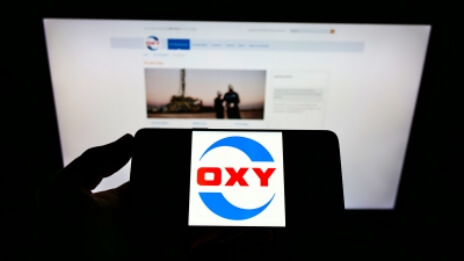Occidental Petroleum (NYSE:OXY) has recently made headlines with its robust free cash flow (FCF) generation, offering an enticing proposition for value-conscious investors and those interested in alternative income strategies like selling out-of-the-money (OTM) put options.
As of September 19, OXY stock is trading at $66.22 per share, showing slight fluctuations in morning trading while maintaining relative stability over the past month.
Potential for FCF Rebound
Understanding the significance of Occidental’s FCF requires a closer look at its recent financial performance.
Q2 2023: Occidental reported $1.005 billion in FCF before working capital adjustments.
Q2 2022: In the same quarter the previous year, Occidental had a substantially higher FCF figure, totaling $4.176 billion.
A similar trend is noticeable in the Q1 results. It’s worth noting that Occidental has consistently ramped up its capital expenditure (capex) spending. In Q2 2023, the company allocated $1.646 billion to capex, a notable increase compared to the $972 million spent in Q2 2022. While increased capex contributes to the variance in FCF, the recent uptick in oil prices suggests the potential for significantly improved adjusted FCF, particularly if capex remains stable.
This positive outlook may be encouraging for value-oriented investors evaluating their options in the stock.
Attractive Valuation
With OXY stock trading at $66.22, it boasts a relatively modest price-to-earnings (P/E) ratio of 17.75 times earnings. This calculation is based on analysts’ consensus estimate of $3.73 in earnings per share (EPS) for the year 2023. However, forward-looking projections by analysts anticipate a potential rise in EPS to $5.09 per share, leading to a forward P/E ratio of just 13 times.
Comparatively, Morningstar reports an average forward P/E of 17.3 times over the past 5 years, suggesting that the stock is currently undervalued when assessed against its historical metrics.
Furthermore, OXY offers an attractive 1.09% dividend yield, making it appealing not only for value investors but also for income-oriented investors seeking reliable dividend income.
Exploring Income Strategies: Selling Short OTM Puts
For investors open to alternative income strategies, selling short out-of-the-money (OTM) put options can be an intriguing option. As an example, consider the September 29 put option chain expiring in just 10 days. These options, with a strike price of $64.00, are trading at 31 cents. By selling these puts, investors can generate an additional 0.48% in income with less than two weeks until expiration.
It’s crucial to understand that this strategy entails some level of risk, given that the strike price is positioned 3% below the current stock price. In the event that OXY’s stock price falls to or below $64.00, the investor may be obligated to purchase additional OXY shares at that specific price. Typically, brokerage firms mandate investors to set aside cash or margin collateral equivalent to the strike price to cover this potential obligation.
However, it’s important to note that the income generated from the short sale, in this case, $31.00, remains with the investor. In a scenario where this OTM short-sale strategy is repeated every two weeks for a year, the total income could reach $806.00, equivalent to 12.6% of the $6,400 initially invested. While there’s no guarantee that options will always carry a premium of this level, it underscores the potential attractiveness of selling puts in the current market environment.
OXY Stock: An Attractive Opportunity for Value Investors
In conclusion, Occidental Petroleum presents an appealing opportunity for value-focused investors. Moreover, selling short out-of-the-money puts can be an enticing income strategy for those willing to manage the associated risks, providing an alternative path to generating income while considering the stock’s undervalued status, potential growth, and long-term stability in today’s dynamic market landscape.
Featured Image: Megapixl © Timonschneider















